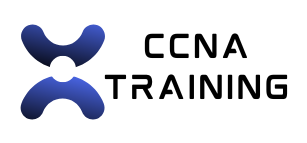Cisco Certified Network Associate (CCNA) is a widely recognized certification in the field of networking. It is an entry-level certification that validates the ability to install, configure, operate, and troubleshoot medium-sized routed and switched networks. CCNA certification is designed to validate the skills and knowledge of entry-level network engineers, and it covers a wide range of networking concepts and technologies.
To earn the CCNA certification, candidates must pass one exam, which covers a broad range of topics including network fundamentals, network access, IP connectivity, IP services, security fundamentals, and automation and programmability. The exam is designed to test the candidate’s knowledge and skills in various networking areas, and passing it demonstrates the ability to work with Cisco networking devices and technologies.
Key Takeaways
- Cisco CCNA is a foundational certification for networking professionals, covering basic to advanced networking concepts and skills.
- Networking fundamentals include understanding the OSI model, TCP/IP protocols, and network topologies.
- Routing and switching essentials involve learning about routing protocols, VLANs, and network security.
- CCNA Security focuses on securing network devices, implementing security protocols, and managing network access.
- Advanced topics in CCNA cover virtualization, cloud computing, and network automation.
Exploring the Fundamentals of Networking
Networking fundamentals are the building blocks of any IT infrastructure. Understanding these fundamentals is crucial for anyone pursuing a career in networking, and it forms the basis of the CCNA certification. Networking fundamentals cover a wide range of topics including the OSI model, TCP/IP protocols, Ethernet, wireless networking, and network topologies.
The OSI model is a conceptual framework that standardizes the functions of a telecommunication or computing system into seven different layers. Each layer serves a specific purpose and provides services to the layer above it and receives services from the layer below it. Understanding the OSI model is essential for troubleshooting network issues and designing network solutions.
TCP/IP protocols are the foundation of the internet and are used to establish connections between devices on a network. These protocols define how data is transmitted over a network and provide the rules for communication between devices. Understanding TCP/IP protocols is essential for configuring and troubleshooting network devices.
Ethernet is a widely used technology for connecting devices in a local area network (LAN). It defines the physical and data link layers of the OSI model and is used to transmit data between devices on the same network segment. Understanding Ethernet is crucial for designing and implementing LANs.
Wireless networking has become increasingly popular with the proliferation of mobile devices and the need for flexible connectivity. Understanding wireless networking is essential for designing and securing wireless networks.
Network topologies define the layout of a network, including how devices are connected and how data is transmitted between them. Understanding network topologies is crucial for designing and troubleshooting network infrastructures.
Learning the Essentials of Routing and Switching
Routing and switching are fundamental concepts in networking and form the core of the CCNA certification. Routing is the process of forwarding data packets from one network to another, while switching involves forwarding data packets within the same network. Understanding routing and switching is essential for designing and managing network infrastructures.
Routing protocols are used to determine the best path for data packets to travel from their source to their destination. There are various routing protocols such as RIP, OSPF, EIGRP, and BGP, each with its own advantages and use cases. Understanding routing protocols is essential for configuring and troubleshooting routers.
Switching involves forwarding data packets within the same network based on MAC addresses. Switches are used to create LANs by connecting multiple devices together. Understanding switching is essential for designing and managing LANs.
VLANs (Virtual Local Area Networks) are used to segment a single physical LAN into multiple logical LANs. VLANs provide security, manageability, and scalability by isolating traffic between different groups of users. Understanding VLANs is essential for designing and securing network infrastructures.
Mastering Cisco CCNA Security
| Metrics | Data |
|---|---|
| Pass Rate | 85% |
| Exam Duration | 90 minutes |
| Number of Questions | 60 |
| Exam Code | 210-260 IINS |
CCNA Security is an advanced certification that validates the skills required to develop a security infrastructure, recognize threats and vulnerabilities to networks, and mitigate security threats. It covers a wide range of security concepts including secure access, VPN, secure routing and switching, Cisco firewall technologies, intrusion prevention systems (IPS), content and endpoint security.
Secure access involves implementing access controls to prevent unauthorized users from accessing sensitive information. This includes authentication, authorization, and accounting (AAA) services, as well as implementing secure management protocols such as SSH and SNMPv3.
VPN (Virtual Private Network) technologies are used to create secure connections between remote users and corporate networks over the internet. Understanding VPN technologies is essential for providing secure remote access to corporate resources.
Secure routing and switching involves implementing security features on routers and switches to protect against various attacks such as spoofing, man-in-the-middle attacks, and denial of service (DoS) attacks.
Cisco firewall technologies are used to protect networks from unauthorized access and ensure that only legitimate traffic is allowed into the network. Understanding firewall technologies is essential for designing and implementing secure network infrastructures.
Intrusion prevention systems (IPS) are used to monitor network traffic for malicious activity or security policy violations. IPS can be configured to automatically drop or block malicious traffic in real-time.
Content and endpoint security involves protecting sensitive information from unauthorized access or disclosure. This includes implementing data loss prevention (DLP) technologies, encryption, and endpoint security solutions.
Advanced Topics in Cisco CCNA
In addition to the fundamental concepts covered in the CCNA certification, there are also advanced topics that are important for network engineers to understand. These topics include quality of service (QoS), network automation, cloud computing, and virtualization.
Quality of service (QoS) is a set of technologies that are used to manage network resources and prioritize certain types of traffic over others. QoS ensures that critical applications such as voice and video are given priority over less time-sensitive traffic such as email or web browsing.
Network automation involves using software tools and scripts to automate the configuration, management, and monitoring of network devices. Automation helps to improve efficiency, reduce human error, and ensure consistency in network configurations.
Cloud computing has become increasingly popular as organizations move their applications and services to the cloud. Understanding cloud computing is essential for integrating on-premises networks with cloud services and ensuring secure connectivity between them.
Virtualization involves creating virtual instances of physical devices such as servers, storage, or networking equipment. Virtualization helps to improve resource utilization, reduce hardware costs, and provide flexibility in deploying new services.
Practical Application and Hands-On Training

Practical application and hands-on training are essential for mastering the concepts covered in the CCNA certification. Hands-on experience with Cisco networking devices such as routers, switches, firewalls, and access points is crucial for developing the skills required to design, implement, and troubleshoot network infrastructures.
Setting up a lab environment with Cisco devices allows candidates to practice configuring different networking technologies such as VLANs, routing protocols, VPNs, and security features. Hands-on training helps candidates gain confidence in working with Cisco devices and prepares them for real-world networking scenarios.
There are also various simulation tools available that allow candidates to practice configuring Cisco devices in a virtual environment. These tools provide a safe and cost-effective way to gain practical experience with Cisco networking technologies.
In addition to hands-on training, practical application also involves applying networking concepts in real-world scenarios. This could include troubleshooting network issues, designing network solutions for specific requirements, or implementing new technologies in an existing network infrastructure.
Exam Preparation and Certification Tips
Preparing for the CCNA exam requires a structured study plan and dedication to mastering the exam objectives. Candidates should start by familiarizing themselves with the exam topics and objectives outlined by Cisco. This will help them understand what areas they need to focus on during their preparation.
Studying from official Cisco learning materials such as books, e-learning courses, or instructor-led training can help candidates gain a deep understanding of networking concepts and technologies. These materials are designed by Cisco experts and cover all the topics tested in the exam.
Practicing with sample exam questions can help candidates assess their knowledge and identify areas where they need to improve. There are various online resources available that provide practice exams and quizzes to help candidates prepare for the exam.
Joining a study group or online forums can provide candidates with an opportunity to discuss exam topics with peers, share study resources, and get advice from those who have already passed the exam.
On the day of the exam, candidates should arrive early at the testing center, bring valid identification, and be prepared to focus on the exam questions without any distractions.
In conclusion, earning the CCNA certification requires a solid understanding of networking fundamentals, routing and switching concepts, security technologies, advanced topics in networking, practical application of skills, and effective exam preparation strategies. By mastering these areas, candidates can demonstrate their ability to work with Cisco networking technologies and advance their careers in the field of networking.
FAQs
What is Cisco CCNA training?
Cisco CCNA (Cisco Certified Network Associate) training is a certification program offered by Cisco Systems that validates the ability to install, configure, operate, and troubleshoot medium-size routed and switched networks.
What are the benefits of Cisco CCNA training?
Cisco CCNA training provides individuals with the knowledge and skills to work with networking technologies, including routing, switching, and security. It also enhances career prospects and can lead to higher-paying job opportunities in the IT industry.
What topics are covered in Cisco CCNA training?
Cisco CCNA training covers a wide range of topics, including network fundamentals, network access, IP connectivity, IP services, security fundamentals, automation, and programmability.
How long does it take to complete Cisco CCNA training?
The duration of Cisco CCNA training can vary depending on the training provider and the individual’s learning pace. Typically, it can take anywhere from a few weeks to a few months to complete the training.
Is there a certification exam for Cisco CCNA training?
Yes, after completing the training, individuals can take the Cisco CCNA certification exam to become officially certified. The exam tests the individual’s knowledge and skills in networking technologies.
What are the career opportunities after completing Cisco CCNA training?
After completing Cisco CCNA training and obtaining the certification, individuals can pursue various career opportunities in the IT industry, including network administrator, network engineer, and systems administrator roles.















